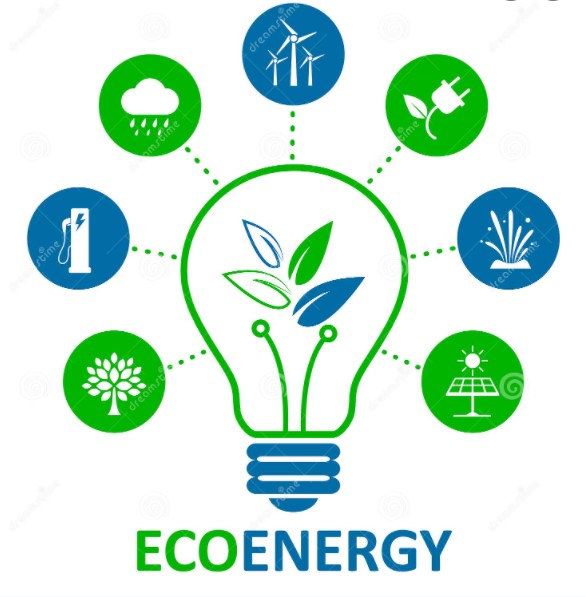Written with Ian Lieblich; an edited version was published in the Southern Highlands Newsletter, No. 245, January-February 2022, pp. 54-56.

When Labor’s 2030 climate changepolicy, Powering Australia, was released early last December, relief by Labor supporters followed a fresh reckoning for the author – one of the ablest in Labor’s ranks, Chris Bowen, Shadow Minister for Climate Change and Energy and Member for McMahon in Sydney’s west. In Australian politics, never has “McMahon” been linked to clever policy development.
Labor has delicately balanced politics with policy, setting the stage for climate change to once again be a key issue in the Federal election. Cleverly, targets were replaced with assumptions. Gone is the “50 per cent renewable energy by 2030” commitment, the target of a Coalition scare campaign in 2019. Instead, an assumption in the detail of Labor’s modelling says that 82 per cent of energy generation in 2030 will be renewable. (Note this is in contrast with the Coalition’s 69% projection).
Paul Keating once said: “good policy is good politics,” a phrase more hopeful than true. Arguably in the Labor Party, poor attention to developing well-researched and considered policy, informed by robust debate and consultation, is an historic weakness. As is the style of governing whereby shadow ministers or ministers with the barest of involvement with others, throw together a hodgepodge of prescriptions under the rubric of this or that policy.
As climate change and its host of wicked dilemmas have preoccupied Labor for the best part of 15 years. Everyone in the party has an opinion, from climate activists attracted to progressive politics, to suspicious tradies in regional centres. New policy is bound to face exacting scrutiny with weaknesses pilloried, not to speak of conservative opponents exaggerating and lying about its “real” impact.
This article discusses the policy objectives and potential refinement, the implications of implementation, the “politics” of the positions proposed and briefly discusses the art of policy formulation.
- Policy Objectives
The policy says its objective is to create jobs, cut power bills, and reduce emissions by boosting renewable energy and bring cheaper renewable energy to Australian homes and businesses. Is all this possible?
Ross Garnaut’s book Superpower. Australia’s Low Carbon Opportunity (2019) argues that a smart government would seek to transform the Australian economy into a booming manufacturing nation based around low-carbon energy. Underpinning Garnaut’s thinking and Labor’s new policy is the appreciation of fresh opportunities springing from new technology enabling cleaner and cheaper energy including through low-emissions vehicles, which in turn allow lower emissions targets and new job opportunities.

Bowen makes specific claims, which are backed by economic modelling, that were released with Labor’s policy. This modelling forecasts that by 2030, 604,000 new jobs, with five out of six of those jobs created in the regions, are spurred by $76 billion of investment. Benefits include a cut in power bills for families and businesses, with around $275 a year less for homes in 2025, compared to today.
Bowen, who in 2019 specifically requested the Climate Change portfolio in the Shadow Ministry, boldly states: “Under a Labor Government, those regions will continue to power Australia and provide a stream of exports into the future.” Head-on is the best way to address the canard that Labor’s policy is only city-focused.
Besides the estimated economic benefits, Labor’s plan is to reduce Australia’s emissions by 43 per cent by 2030 – thereby replacing the present, Abbott-era target which is amongst the least ambitious of OECD nations, and becoming Australia’s target under the Paris Agreement, and on track for net zero by 2050.
Bowen says that the new policy is both realistic and ambitious and creates certainty for Australian businesses.
2. Policy Details
Specifically, Labor proposes to:
- Upgrade the electricity grid to fix energy transmission and drive down power prices.
- Make electric vehicles cheaper with an electric car discount and Australia’s first National Electric Vehicle Strategy.
- Adopt the Business Council of Australia’s recommendation that Australia’s 200 biggest emitters covered by the Government’s Safeguard Mechanism (another Abbott-era policy) be subjected to gradual and predictable emissions reduction regulation over time, to support international competitiveness and economic growth – consistent with industry’s own commitment to net zero by 2050.
- Protect the competitiveness of Emissions Intensive Trade Exposed industries by ensuring they will not face a greater constraint than their competitors.
- Allocate up to $3 billion from Labor’s National Reconstruction Fund to invest in “green metals” (steel, alumina and aluminium) forged through clean energy component manufacturing.
- Support for hydrogen electrolysers and fuel switching; agricultural methane reduction and waste reduction.
- Provide direct financial support for measures that improve energy efficiency within existing industries and develop new industries in Regional Australia through a new Powering the Regions Fund.
- Roll-out 85 solar banks around Australia to ensure more households can benefit from rooftop solar, making solar power accessible to those who either rent, live in apartment blocks, or cannot afford the upfront costs.
- Install 400 community batteries across the country.
- Demonstrate Commonwealth leadership by reducing the Australian Public Service’s own emissions to net zero by 2030.
- Invest in 10,000 New Energy Apprentices and a New Energy Skills Program.
- Establish a real-world vehicle fuel testing program to inform consumer choice.
- Work with large businesses to provide greater transparency on their climate related risks and opportunities.
- Re-establish leadership by restoring the role of the Climate Change Authority, while keeping decision-making and accountability with Government and introducing new annual Parliamentary reporting by the Minister.
One surprise on the release of the new policy is that most significant, peak industry bodies including the Business Council of Australia, Australian Industry Group, and the National Farmers Federation broadly supported Labor’s policy, enabling Bowen to say he is in line with Australia’s leading industry, business, and agricultural groups.
3. Potential Policy Refinement
With initial reaction favourable, there might be the temptation to refine policy further either before the next election or immediately thereafter.
Here are three areas covering – the safeguard mechanism, community engagement, and electric vehicles – that might be fruitfully explored.
The Safeguard mechanism:
First, promising to implement the Business Council of Australia’s suggested ratcheting up of the Safeguard Mechanism (originally introduced by the Abbott Government) is indicative of the balance Labor struck between meeting corporate interests, mitigating a Coalition scare campaign (by expanding upon an existing Liberal policy), and appeasing activists demanding action on climate change.
The Safeguard Mechanism applies to facilities emitting more than 100,000 tonnes of carbon dioxide equivalent per year. Presently 215 entities meet this annual threshold. The responsible emitter who has operational control of the facility must ensure the facility’s net emissions do not exceed the baseline determined by the Regulator, which are due to be reset in 2021/22.
Success hinges on the regulatory settings imposed by the Clean Energy Regulator and the Department of Industry, Science, Energy and Resources. The present absence of details concerning how industries such as the liquid natural gas export industry will be treated is a concern. The trajectory of these sectors will need to be ambitious lest it undermine the emissions reductions gains achieved in other areas of the economy.
Unfortunately, this has been true to date, as the Coalition’s choice not to regulate via the Safeguard mechanism, allowed BHP, Anglo American and Tomago Aluminium to increase emissions by over 1.m t.CO2 in 2020. Almost completely wiping out the 1.7m t.CO2 the ERF auctioned off at the same time at the cost of $27.6m to the tax-payer.
Almost two thirds of the 215 entities which exceed the Safeguard Mechanism’s annual emissions threshold (and thus must reduce emissions alongside a declining baseline) already have net zero by 2050 or even sooner targets. Labor’s ability to engage the lagging companies, ensuring they are on board with the journey to net zero emissions, will be critical to the success of the policy.
Community engagement:
Second, Labor pledged to make existing technologies – specifically solar and battery storage – accessible to those who presently cannot access them (such as those who are renting, live in an apartment, cannot afford the upfront costs, etc.) by pooling resources and encouraging communal ownership of infrastructure. Potentially, this focus on community engagement could stimulate new ownership models and incentivise creative and innovation solutions from energy retailers and new, smart-tech start-ups.
An interesting question is whether and how Labor intends businesses to get involved in the management of those programs, such as through the aggregation of energy usage data.
Electric vehicles:
Third, on electric vehicles, announced transport mechanisms forego implementing minimum vehicle emission standards (the mechanism used in most of the developed world to reduce transport emissions). Instead, policy depends on exemptions for import tariffs and fringe benefit taxes, as well as commitments from Commonwealth fleets to usher in newer and cheaper models. We could ask: why not institute minimum vehicle emissions standards, as Josh Frydenberg once suggested?
A pledge to electric government fleets is of particular importance given the likelihood that it will lead to the creation of a second-hand Australian electric vehicles market.
A question for the future, potentially for the looming election campaign, is whether further incentives might be considered for the import of second-hand electric vehicles from right-hand drive nations including the UK and Japan.
4. The Political Settings Shifted in 2020/21
In recent elections Labor sometimes appeared divided on the appropriate policy stance. Bowen’s policy seems to have won wide acceptance on the Labor side, with the Liberal National parties’are demonstrating internal differences.
There are two qualifications to this assessment. First, the political environment is more attuned to sensible climate policy. The 2020 bushfires across Australia “educated” the public that the issues are real. The Morrison Government itself “agreed” to the recommendations of COP 26 (on which more below) and signed up to deliver a more ambitious 2030 target. Frustratingly, the Prime Minister promptly abandoned this pledge upon returning from Paris and swapping the ire of our international allies for the warm embrace of the climate-denier rump among his MPs. He also evoked opprobrium in business circles for not being clear on the policy and rules for renewables and associated commercial investment.
Second, the Greens insist that Labor’s policy is a sell-out which is a familiar refrain. Some prominent Labor personalities, such as Barry Jones, say Labor’s policy is not ambitious enough. claiming that Labor appears intimidated by past setbacks. Ironically, such attacks help to distinguish Labor from the Greens, a favourable scenario in regional Australia.
5. Why COP 26 Mattered
The Conference of Parties to the United Nations Framework Convention on Climate Change (known as COP), is an annual meeting of UN member states, whose objective is to stabilise greenhouse gas concentrations in the atmosphere at a level that would prevent and reduce dangerous anthropogenic caused climate change.
COP 26 was the UN climate change summit held in Glasgow in late October to mid-November 2021, attended by the Prime Minister and most leaders from developed countries. It was the 26th session of the “climate COPs” which have met annually since 1995.
In 2015, the 21st Session of the COP (COP 21) came up with the second international climate agreement, named the Paris Agreement after its host city, and replacing the 1997 Kyoto Protocol, whose binding approach to emissions reductions targets meant Australia did not ratify the Protocol until the Rudd Government came to power, ten years after signing Kyoto.
In contrast, the Paris Agreement adopted a bottom-up approach, asking countries to set their own “nationally determined targets” to keep global temperature rise in this century well below 2 degrees Celsius above pre-industrial levels, and to pursue efforts to limit the temperature increase even further to 1.5 degrees Celsius, thus limiting further climate change.
COP 26 focused on all countries submitting their new long-term goals; so as to address the global climate emergency; rules for a carbon market between countries; and, implementation of the 2015 Paris Agreement as the key driver of international climate action.
Australia’s attendance was partially due to the need to present Australia’s policies and actions as mainstream and to preclude economic penalties for appearing backward. Morrison announced Australia was committed to net zero by 2050.
We suspect the PM also planned to call an early election for December 2021 but chickened out as opposition erupted back home in hold-out pockets of the Coalition. The political uncertainty associated with Gladys Berejiklian’s resignation in October 2021 as Premier of NSW was also a factor.
Labor sees that Australia is in a race. Every major economy in the world is moving toward renewables. If we do not significantly step-up investment in a homegrown renewables sector, Australia will be left out and left behind. Within the Coalition, 2021 saw the dawning realisation that global investors would mark Australia as a laggard in climate change policy. The Treasurer and Treasury warned that the cost of capital to invest in Australia will increase if the climate policy settings were considered sub-standard by global investors. Such investors are increasingly focused on sustainability and other aspects of what is broadly called environmental, social, and governance best practice.
Pointedly, Bowen highlights that Labor’s proposed 43 per cent reduction target for Australia is comparable to targets and policies set by major trading partners such as Canada, with a similar economic base, at 40-45 per cent, South Korea at 40 per cent and Japan at 46 per cent.
6. Conclusion
The deliberate, carefully balanced approach to climate policy announced by Labor, when paired with support, rather than derision, from business groups positions Labor for victory in 2022.
Business support and falling trust in the Coalition Government mitigates against the effectiveness of government scare campaigns. Such a campaign has started. The Prime Minister and Minister for Emissions Reductions have incorrectly labelled Labor’s proposal on the Safeguard Mechanism a “stealth carbon tax”. Scare tactics are sadly familiar and echo false claims that a price on carbon would lead to “$100 roasts” and that electric vehicles will “end the weekend”.
Policy development and refinement is enhanced if formulation extends beyond one person or a small group around a shadow minister. There is surely an excellent opportunity for business to play a part – particularly finance and superannuation groups, including the Investor Group on Climate Change (IGCC) and Responsible Investment Association of Australia (RIAA) – in lending credibility and support to Labor’s Plan.
In the 2019 election as with every other since 2007, Labor failed to strike the right balance and lost more votes than it won, in Queensland especially. Policy settings for the looming election campaign are in contrast.
The Hawke/Keating reforms in the 13 years after 1983 led to the modernising of the Australian economy, the re-establishment of universal health care, Medicare, and universal superannuation. The way Cabinet government operated for most of the period encouraged policy innovation. Hawke’s was the gold standard model for Labor administration. But that is a topic for another day.
For those who danced on Bowen’s “political grave” in 2019, this policy is a reminder of what able policy-making is all about. Bowen may prove Keating right, after all, on the political merit of good policy.
Postscript 2022
Notwithstanding the excellent edits for publication by Milton Cockburn, in this version we retained most of the policy detail in Section 2 (edited out in the version published in the Southern Highlands Newsletter.) This is because the bullet-points, slightly edited for clarity, are directly from Labor’s policy and therefore worth featuring.
Ian Lieblich is Head of ESG at EG Funds Management.







